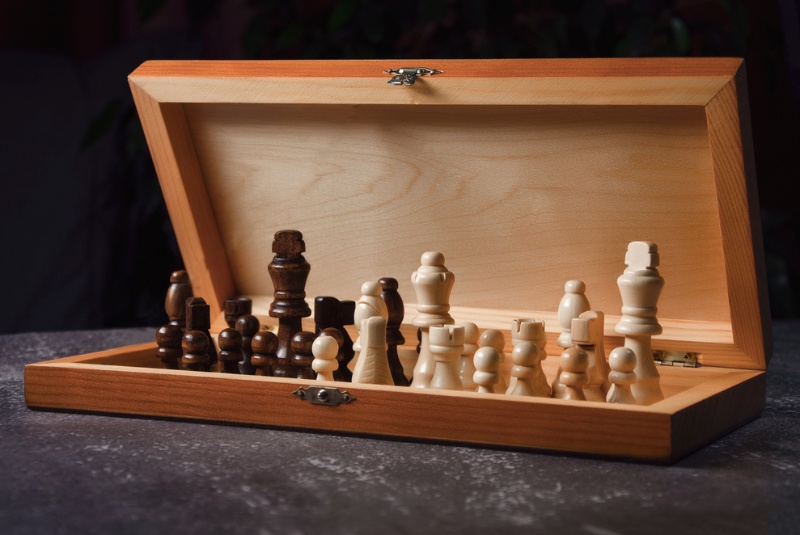Selecting the right chess set is not just about buying a game; it's about investing in a piece of art, a tool for mental challenge, and possibly a family heirloom. Whether you are a casual player, a serious enthusiast, or a collector, understanding the different aspects of chess sets will help you make an informed decision. This guide covers everything from the basics of chess set components to the nuances of material and craftsmanship, ensuring you find the perfect chess set for your needs.
Understanding Chess Set Components
Every chess set consists of the board and the pieces, each integral to the game's function and aesthetic. The board should have alternating light and dark squares, with a total of 64 squares. Chess pieces include the King, Queen, Rooks, Bishops, Knights, and Pawns, each with specific rules on movement. When selecting a chess set, ensure that the size of the pieces is proportionate to the squares on the board for ease of play. Typically, the king's height dictates the scale, with a recommended ratio of base diameter of the king to the size of the square.
Selecting the Right Size and Proportion
The size of your chess set is crucial for comfortable play. Tournament-standard chess boards have squares that are typically between 2 to 2.5 inches. Correspondingly, the king's height should be around 3.75 to 4.25 inches. However, for home or decorative use, you might prefer a larger or smaller set based on where the set will be displayed or stored. Ensure there is enough space around the outer edge of the board to hold captured pieces and to rest players’ hands during the game.
Deciding Between Functionality and Aesthetic
Chess sets range from highly ornamental sets that function as decorative pieces to practical sets designed for frequent use. If you’re a tournament player or aspire to be, consider a set with a standard design that meets competition regulations. For home use, you might want a set that complements your decor or expresses personal style. There are themed chess sets, which are fun and can be a focal point in a room, but they might not be suitable for serious play due to non-standard piece designs.
Material Choices: Wood, Plastic, Metal, and More
The material of both the board and pieces affects the look, feel, and durability of the chess set. Wooden chess sets are classic and durable, with high-quality wood like rosewood, walnut, and ebony being popular among collectors and enthusiasts. Plastic sets are affordable and practical, ideal for children and beginners, as well as for regular players since they are durable and easy to clean. Metal sets, often made from brass or aluminum, offer a distinctive look and a satisfying heft, making them excellent for display and occasional play.

Craftsmanship and Detail in Chess Pieces
The level of detail in chess pieces can vary significantly. Artisan sets often feature hand-carved pieces with intricate detail and unique designs. These sets can be quite expensive but are a worthwhile investment for collectors or as a luxury gift. For regular players, the craftsmanship should still ensure that the pieces are durable and well-balanced, with a stable base and no sharp edges that could scratch the board.
Choosing a Chess Board: Style and Material
The board should complement the pieces, both in style and functionality. Wooden boards are preferred for their classic look and durability, but alternative materials like glass or marble can offer a modern twist and are often favored in decorative sets. Consider the color contrast between the board squares and the pieces to ensure good visibility during play. Some boards also feature coordinates along the edges to aid in learning and discussing the game, which can be especially useful for beginners.
Storage and Portability
If you plan to travel with your chess set or need to store it safely, consider options that include storage. Many high-end sets come with a case or box where pieces can be securely stored when not in use, protecting them from dust and damage. Foldable or magnetic boards are practical for travel, offering good playability while being compact and easy to carry.
Set Budget and Considerations for Collectors
Your budget will largely dictate the kind of chess set you can afford. Basic plastic sets can be very affordable, while high-end luxury sets can cost thousands. For collectors, the rarity and origin of the set, as well as the materials and the reputation of the maker, can also significantly influence the price. When considering an investment in a collector's set, research the market and potentially look at auctions where unique and valuable sets can be found.
Where to Buy Your Chess Set
You can purchase chess sets from a variety of sources including specialty game shops, online retailers, and directly from manufacturers. When buying an expensive or collectible set, it’s advisable to deal with reputable dealers or directly from well-known craftsmen to ensure authenticity and quality. Online reviews and chess forums can also be valuable resources for recommendations on where to buy and which sets offer the best quality for their price.
By carefully considering these aspects, you can select a chess set that not only meets your practical needs for playing the game but also serves as a beautiful piece of art and a potential heirloom. Whether for personal use, display, or as a thoughtful gift, the right chess set can bring aesthetic pleasure and intellectual stimulation for years to come.




